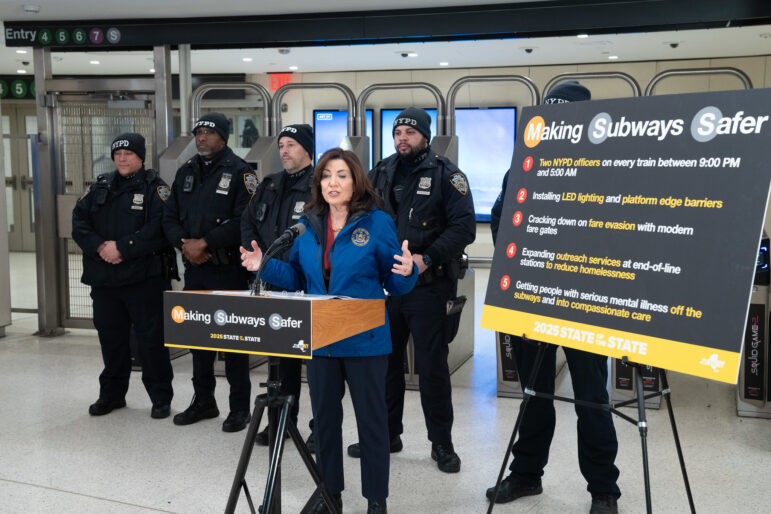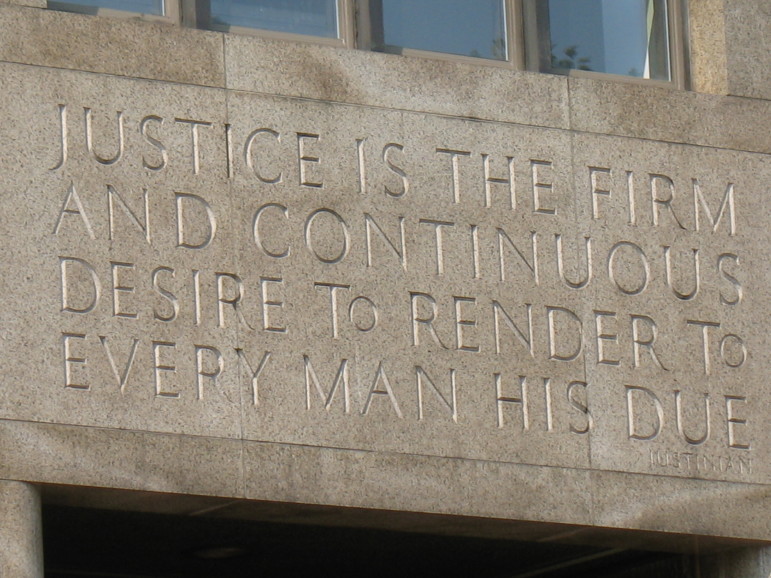The fruits of Washington’s sound fiscal policy were plucked from the vine this year in the form of a $92 billion surplus. It’s the capstone of the Clinton economic policy and Ross Perot’s sole lasting legacy in American life.
But for New York, it’s the same old story: A budget full of mixed blessings–and many sins of omission.
“We have such lowered expectations that when they stop beating us, we are relieved,” says welfare expert Liz Krueger, of the Community Food Resource Center. “When it comes to government funds, a good news budget is one that doesn’t hit poor people even harder. But do I think people should take to the streets in joy? No.”
Here’s a breakdown of how the half-trillion-dollar spending plan will affect low-income New Yorkers.
_______
A hike in school spending was the top budget headline and Bill Clinton’s proudest achievement this year, but the reality is that the increases are not as large as the White House would have the world believe.
The big news was $1.2 billion to hire 100,000 new elementary school teachers nationwide over the next six years, a plan that would limit kindergarten through third grade class size to 18 children per classroom. While welcome, that money is budgeted for only one year’s salary for each teacher. And the more than $100 million that New York State will receive under this formula doesn’t necessarily meet the system’s greatest needs.
That’s because a similar state scheme is already on the horizon. The Ladder program, a three-year, $225 million funding stream to reduce K-3 class size by hiring more teachers, is scheduled to begin next year. The state program, bringing class size down to 20, left local districts footing as much as one-third of the bill, so the federal legislation will fill some gaps.
But an opportunity to fix the city’s crowded, decrepit schools has gone unrealized. An amendment that would have allowed $22.6 billion in federal school construction and restoration bonds over the next two years didn’t make the final cut. New York City stood to receive $1.6 billion under the plan.
The federal government has never been in the school facility funding business in any significant way before, but the real reason the amendment was shot down may have more to do with politics. Republicans were unwilling to give credit for such a popular measure to the amendment’s main sponsor, Illinois’ Democratic Senator Carol Moseley-Braun, who is in a re-election race the GOP has identified as a must-win.
_______
Social services are in marginally better health, with incremental increases across the board and most of the House of Representative’s nastiest cuts nixed.
The Department of Health and Human Services got its biggest hike in seven years, with an $800 million increase in AIDS-related funding, including $300 million for substance abuse and treatment programs. AIDS prevention money was bumped up 5 percent to $660 million, $25 million more than Clinton requested, and the Congressional Black Caucus secured a $110 million chunk for prevention in African-American communities.
Three Presidential requests–reauthorizing low-income utility bill subsidies, funding for youth summer job programs, and more than $300 million for Head Start–that were slated to be killed wound up surviving. Medicare got an additional $163 million.
But the social services block grant was cut nearly $400 million below last year, and the Wellstone amendment, which would have opened up welfare work requirements to include two years of college or a second year of vocational training, was stripped from the higher education bill.
_______
The Department of Housing and Urban Development programs got a $2.7 billion increase this year, for a total budget of $24.5 billion. Section 8–the program that subsidizes rents for poor tenants in private housing–has 50,000 new vouchers to help families coming off of welfare, and the bill eliminated a system delay that used to freeze up 40,000 vouchers a year. Next year should see 100,000 more vouchers, and another 100,000 added in 2001.
Capital improvement money for public housing increased to $3 billion, and the HOPE VI program, which is demolishing the nation’s most decayed projects and replacing some with small buildings, was boosted by 20 percent.
The Trojan horse: a public housing reform bill that Republican Rick Lazio has been trying to pass for two years. Tenant advocates were horrified by earlier House versions of the bill, which would have replaced some of the poorest tenants with working-class ones and introduced stiff work requirements. In the version that passed, the worst of these provisions are gone, and most of the spaces in the projects are still reserved for the poor.
“It’s a far cry from where the House bill was, and even better than the Senate bill,” says Linda Couch of the National Low Income Housing Coalition. “It’s pretty good news.”
HUD also increased homeless housing money by 18 percent, up to nearly $1 billion–but that may not matter much since, as of late, New York State has been much less aggressive in grabbing its share. HUD got a $11 million increase for AIDS housing funds, and through the omnibus spending bill, Congress pushed the sum up another $10 million to a total of $225 million. It’s a substantial increase, but with many new jurisdictions now eligible for the funds, New York’s share probably will climb by only 2 percent–just keeping up with inflation. There was also good news for gay rights advocates: the defeat of the Riggs Amendment, which would have denied federal housing funding to cities that recognize same-sex marriage.
_______
For years residents of the South Bronx, home to the city’s worst asthma rates, have wondered what’s in the air, and whether it’s there because of environmental racism.
The federal Environmental Protection Agency was just given the green light–and $400,000–to look into both issues. If the agency concludes that the city subjected Hunts Point to a disproportionate number of potentially harmful facilities, the city could lose its federal environmental funding. Most jurisdictions settle, though, before such drastic measures are taken. The EPA will also receive $91 million to help communities assess the level of contamination on local brownfield sites and devise plans for their redevelopment.
_______
The communities that line Brooklyn’s Gowanus Expressway had hoped that the federal budget would include the $18 million that had passed in an earlier authorization bill a few months ago to study alternatives to the expressway. It didn’t make it. But with $4.6 billion set aside nationally for transit improvements in the new generation of transportation funding–the National Economic Crossroads Transportation Efficiency Act (NEXTEA)–the city could take a crack at turning more drivers into straphangers. NEXTEA will provide $175 billion from 1998 to 2003 on improving the nation’s transportation infrastructure.
States and localities have more flexibility to use NEXTEA funds than under its predecessor, which expired in 1997. The wide-reaching program can also claim a role in welfare-to-work: $100 million to develop private-public partnerships that will link people to entry-level jobs in transportation.








